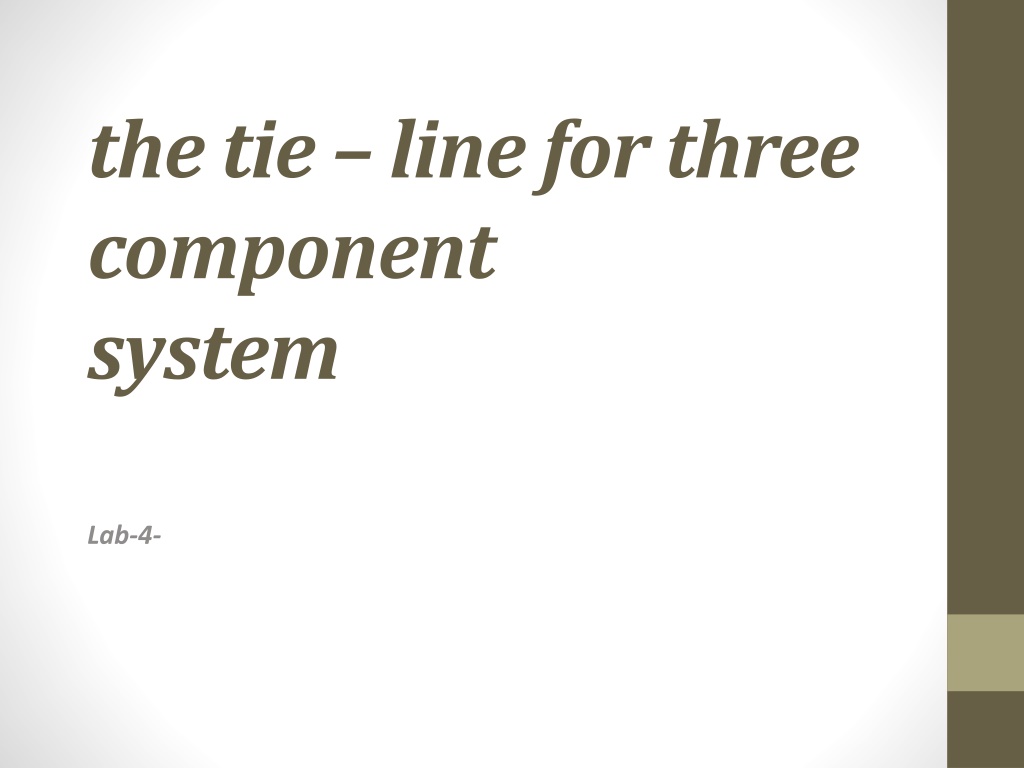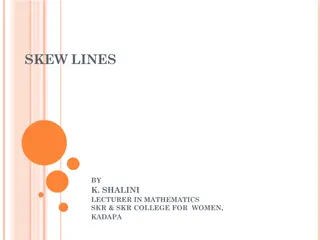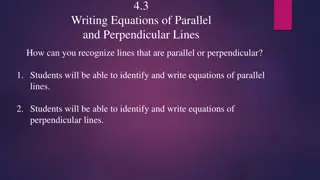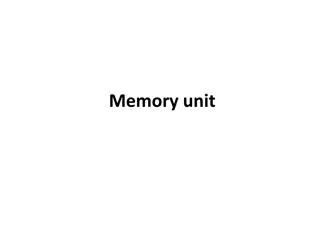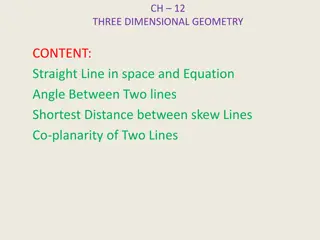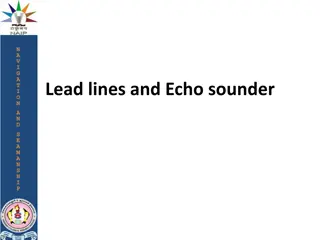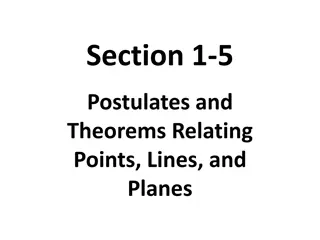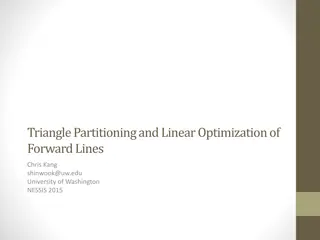Understanding Tie Lines in Ternary Systems
Ternary systems involve three components where partial miscibility can lead to phase separation. Adding alcohol to a benzene-water mixture can promote miscibility by acting as an intermediary solvent. By breaking cohesive bonds and increasing heat, the system can transition to a single phase. The properties of tie lines in binary systems still apply, with conjugated phases at specific compositions. The direction of tie lines is influenced by the solubility of the third component.
Download Presentation

Please find below an Image/Link to download the presentation.
The content on the website is provided AS IS for your information and personal use only. It may not be sold, licensed, or shared on other websites without obtaining consent from the author. Download presentation by click this link. If you encounter any issues during the download, it is possible that the publisher has removed the file from their server.
E N D
Presentation Transcript
the tie line for three component system Lab-4-
Ternary systems with one pair of partially miscible liquids:- - water & benzene are miscible only to a slight extremes so a mixture of the two usually produces 2 phase system the lower layer consist of water saturated with benzene while the lighter phase (upper) consist of benzene saturated with water - On the other hand , alcohol is completely miscible with both benzene & water .it is expected ,therefore, that the addition of sufficient alcohol to 2 phase of water & benzene will produce single phase system in which all the three component are miscible. - it might helpful to consider alch. As acting in manner comparable to that of temp. in binary system of phenol & water .
As heat used to break the cohesive forces between molecules miscibility increase until one phase result , the addition of alch. To benzene-water mixture achieves the same but by different means namely solvent effect instead of temp. effect . In this case alch. Serves as intermediate polar solvent that shifts the electric equilibrium of the dramatically opposed highly polar water & non-polar benzene solu. to provide solvation .
Break cohesive bonds Result one phase Heat increase Increase miscibility
Alcohol addition Solubilize the mixture Water benzene One phase
NOTE Adhesive means force between Alike Cohesive means force between Like
The properties of tie lines for binary systems still apply, and systems g and h prepared along the tie line fi are and both give rise to two conjugated phases having the constant compositions denoted by the points f and i.
the tie line with the binodal are not necessarily parallel to one another or to the base line as in binary systems ,in fact the direction of the tie line are related to the shape of binodal curve ,which in turn depends on the solubility of the third component (i.e. alch.) in the other two components . only when the added component acts equally on the other two component to bring them into solu. Will the binodal perfectly symmetrical & the tie line run parallel to the base line .
Properties of the tie line of three component system :- 1- any system prepared a long the tie line both give rise two phase having a constant composition. 2- the relative amount by wt of the two conjugate phases will depends on the position of the original system along the tie line.
Procedure:- In a small reparatory funnel prepare 50 gm of a mixture having composition giving rise to a two phase system (e.g. 4gm HAC+16 gm CHCl3 +30gm H2O). Separate each layer in two conical flasks. Weigh 10 gm for each layer. Titrate each layer with standard 1N NaOH solution using phenolphthalein as indicator. The end point from colorless to pink. Obtain tie line, calculate the percent W/W of HAc in each layer and locate the values on the miscibility curve. The straight line joining these points should pass through compositions of the two phase system.
Calculation:- HAC + NaOH NaAc + H2O 1 M.Wt. of HAC= 1 M.Wt. of NaOH 1 eq.wt of HAC = 1eq.wt of NaOH 60 = 1000 ml 1N NaOH 60/1000 = 1 ml 1N NaOH So, each 1 ml of 1N NaOH is equivalent to 0.06 gm, this is the chemical factor (it is the no. of gms of substance which is equivalent to 1 ml of standard solution). E.P 1 x o.o6 =gm HAC in 10 gm aqueous layer (upper layer). E.P 2 x o.o6 =gm HAC in 10 gm CHCl3 layer (lower layer). Change these values to percent.
Note:- For the upper layer (100%- HAC) represent mostly water with little chloroform. This layer represents aqueous layer. For the lower layer (100%-HAC) represent mostly chloroform with little water. This layer represents chloroformic layer.
